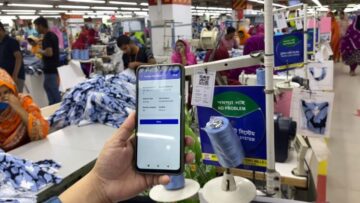
A recent report by the World Trade Organisation (WTO) suggests that Bangladesh and other Least Developed Countries (LDCs) could see an increase in exports to the United States, despite ongoing trade tensions and policy uncertainties.
According to the WTO’s April issue of Global Trade Outlook and Statistics, Bangladesh, along with Cambodia and Lesotho, stands to benefit as their export sectors, particularly clothing, textiles, and electronic equipment, are heavily reliant on products that currently make up a significant share of US imports from China. The report’s simulation models indicate that shifting US demand could favour these LDCs by providing new export opportunities.
However, the report also highlights the risks posed by US trade policies. The Trump administration previously imposed tariffs on numerous countries, and a recent move to impose a 37 per cent tariff on Bangladeshi goods entering the US market, following a 90-day pause, could hinder export growth.
The WTO notes that the global trade outlook has worsened sharply due to rising tariffs and increased trade policy uncertainty. As of 14th April, measures such as the suspension of reciprocal tariffs by the US have been in place, and the WTO projects a slight decline of 0.2 per cent in world merchandise trade volume in 2025. A modest recovery of 2.5 per cent is anticipated in 2026.
The report warns that if the US reinstates reciprocal tariffs, global trade could shrink further by an additional 0.6 per cent, with overall trade volume potentially dropping by 1.5 per cent in 2025. Such measures would particularly impact LDCs, which could see their export growth further curtailed by spreading trade policy uncertainties.
Despite these challenges, the report emphasises that the reduction in US imports from China, especially in textiles, apparel, and electrical equipment, may create new opportunities for alternative suppliers, including Bangladesh. This shift could help some LDCs expand their exports to the US market in the coming months.






